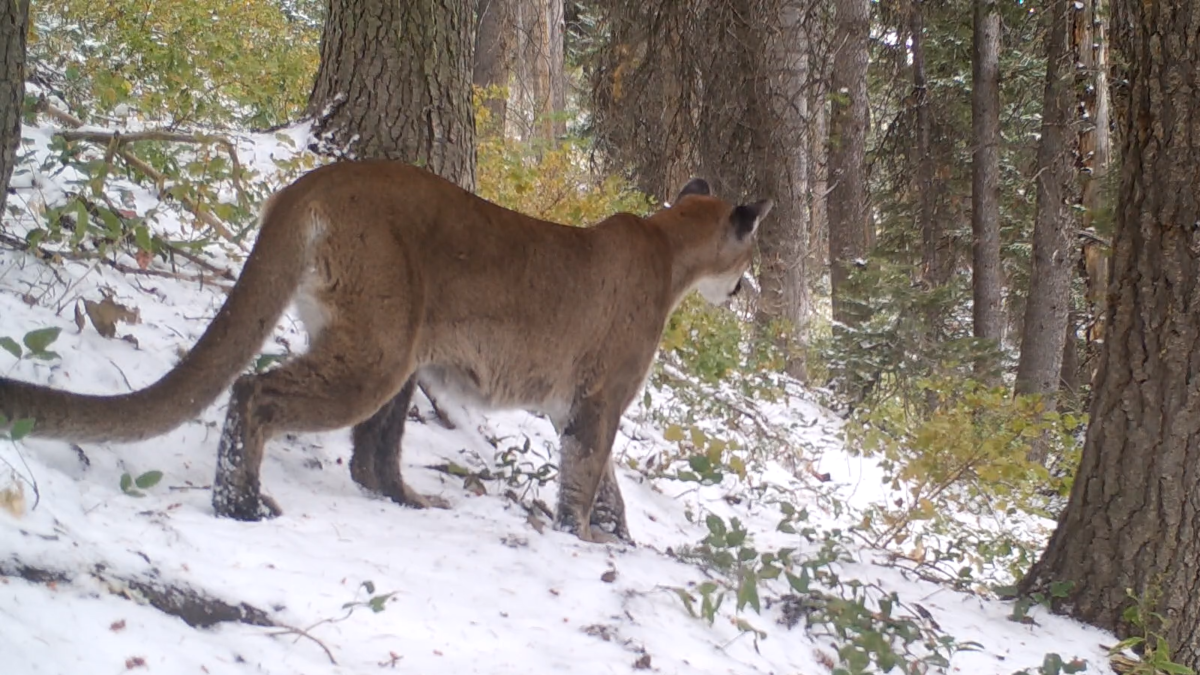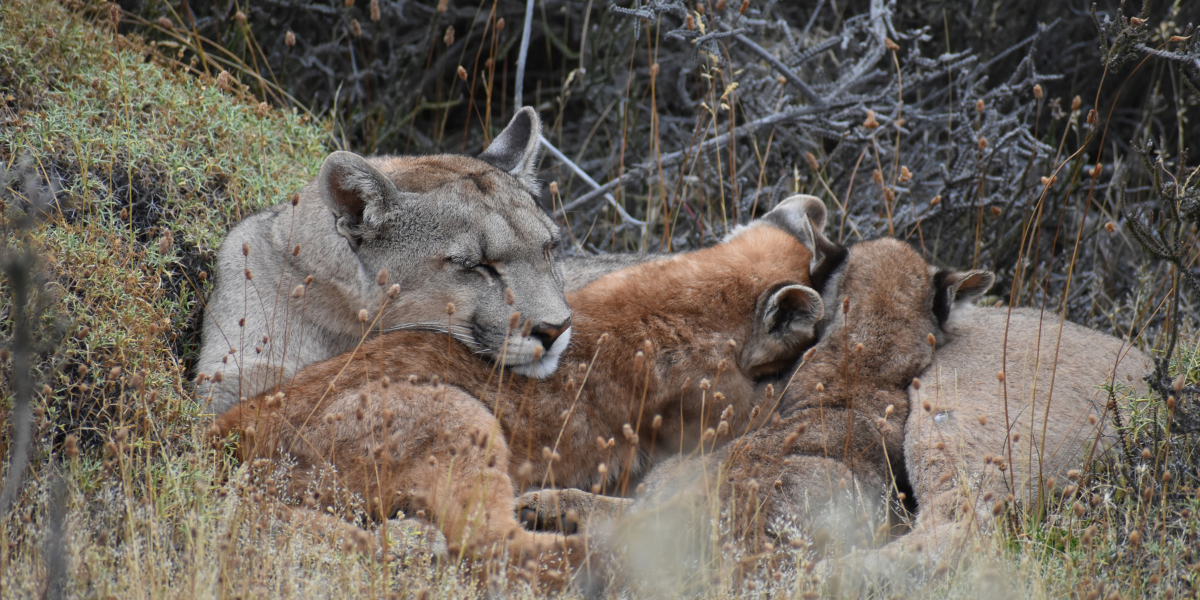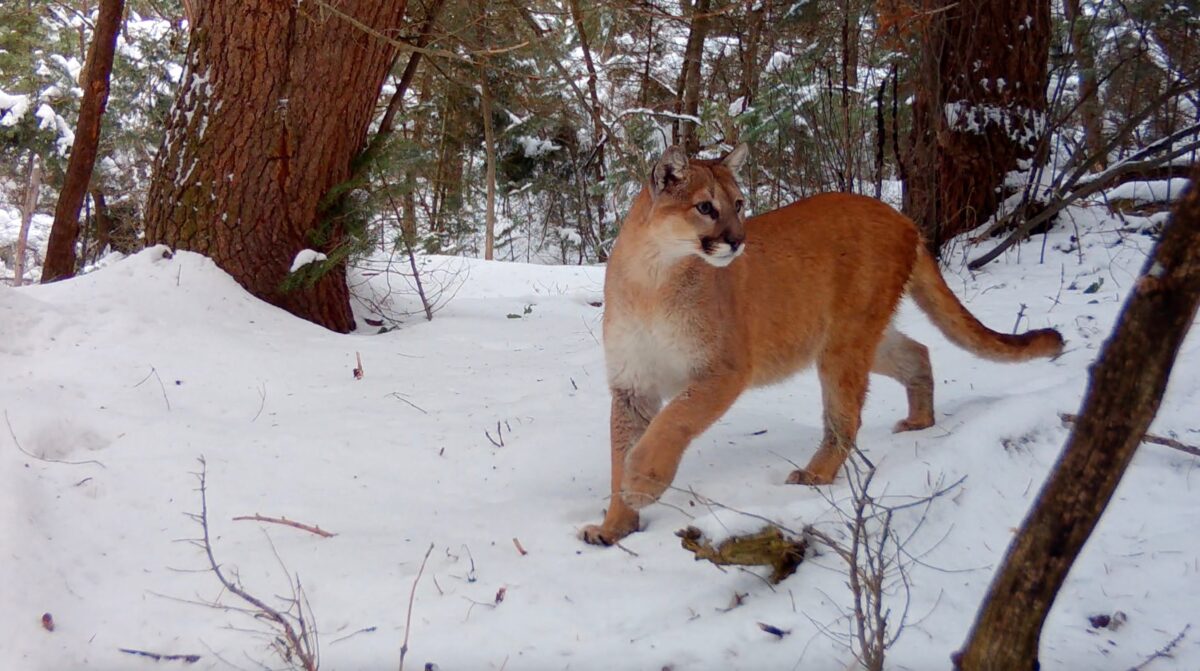The Mountain Lion Foundation welcomes members from across the country. Today, we’re pleased to introduce you to one of our members from the East Coast.
 Meet Nora
Meet Nora
Nora Parker is a New Jersey native and an avid animal lover, both wildlife and domestic. Nora also has close family in the Los Angeles area who’ve long shared their affinity and concern for the beloved cougar population in that area. Their concern piqued Nora’s interest in helping ensure the safety of mountain lions and that led her to find the Mountain Lion Foundation.
After signing up for a few of the Living with Lions webinars this summer, Nora was one of the first people to join our new monthly giving program. As a Puma Protector, Nora is enabling the Mountain Lion Foundation to encourage more people to consider the irreplaceable role that pumas — also known as mountain lions — play in our ecosystems.
Nora, what inspired you to become a Puma Protector?
I believe in the mission of the Mountain Lion Foundation and a monthly gift is a great way to help them be able to bank on a reliable monthly source of income outside of the many other ways in which people give. It’s easy and convenient for me as well.
Why are mountain lions important to you?
Mountain lions are majestic and incredibly adaptive animals who have endured great destruction of their natural habitats at the hands of humans. I believe they have as much right to the environment as we do—we’ve come into THEIR homes, and we owe it to them now to ensure that they can continue to live among nature despite our encroachment having made it more difficult for them.
How can the Mountain Lion Foundation put your gift to the best use?
I have trust in the organization’s mission and expertise and so I also trust and rely on them to use my gifts in whatever way they consider to be a priority at any given time.
What do you want other people to know about the Mountain Lion Foundation?
I’m happy that they are working so hard to educate and provide support for projects and legislation to preserve the mountain lions in our country before the situation reaches a point of no return and we lose them altogether. In a crisis-oriented society, they are “out there” before it becomes too little, too late. The educational opportunities they provide are invaluable in encouraging people to understand and appreciate this beautiful native species, while providing scientific and rational approaches to living in harmony in shared environments and dispelling unnecessary fear of generally peaceful animals. Even if you may never have the chance to see them yourself, the Mountain Lion Foundation provides so many wonderful ways for you to enjoy their natural lifestyles and be motivated to keep them safe.
 Becoming a Puma Protector
Becoming a Puma Protector
If you are interested in becoming a monthly donor, please visit us our Puma Protector page or email EMathews@mountainlion.org.
We can’t reach our goals without the support of people like you who recognize the importance of preserving our natural world and protecting the wildlife within it. With your monthly donation, we can continue to educate the public about the importance of cougars, fund research to better understand their behavior and needs, and advocate for policies that protect their habitats and promote coexistence.
With a pledge of $25 per month or more, you will receive a limited edition print titled Protected Serenity by artist Debra Winruth. Every new monthly donor will receive a logo sticker.
Banner photo: Johnsonburg Swamp Preserve near Newton, New Jersey. Credit: Nicholas T.



 Meet Nora
Meet Nora Becoming a Puma Protector
Becoming a Puma Protector

 Cougars of Klickitat County
Cougars of Klickitat County Carnivore-Safe Barn Retrofit
Carnivore-Safe Barn Retrofit Wildlife Tracking Walk
Wildlife Tracking Walk



 Color a cougar
Color a cougar Spend the day in mountain lion habitat
Spend the day in mountain lion habitat


